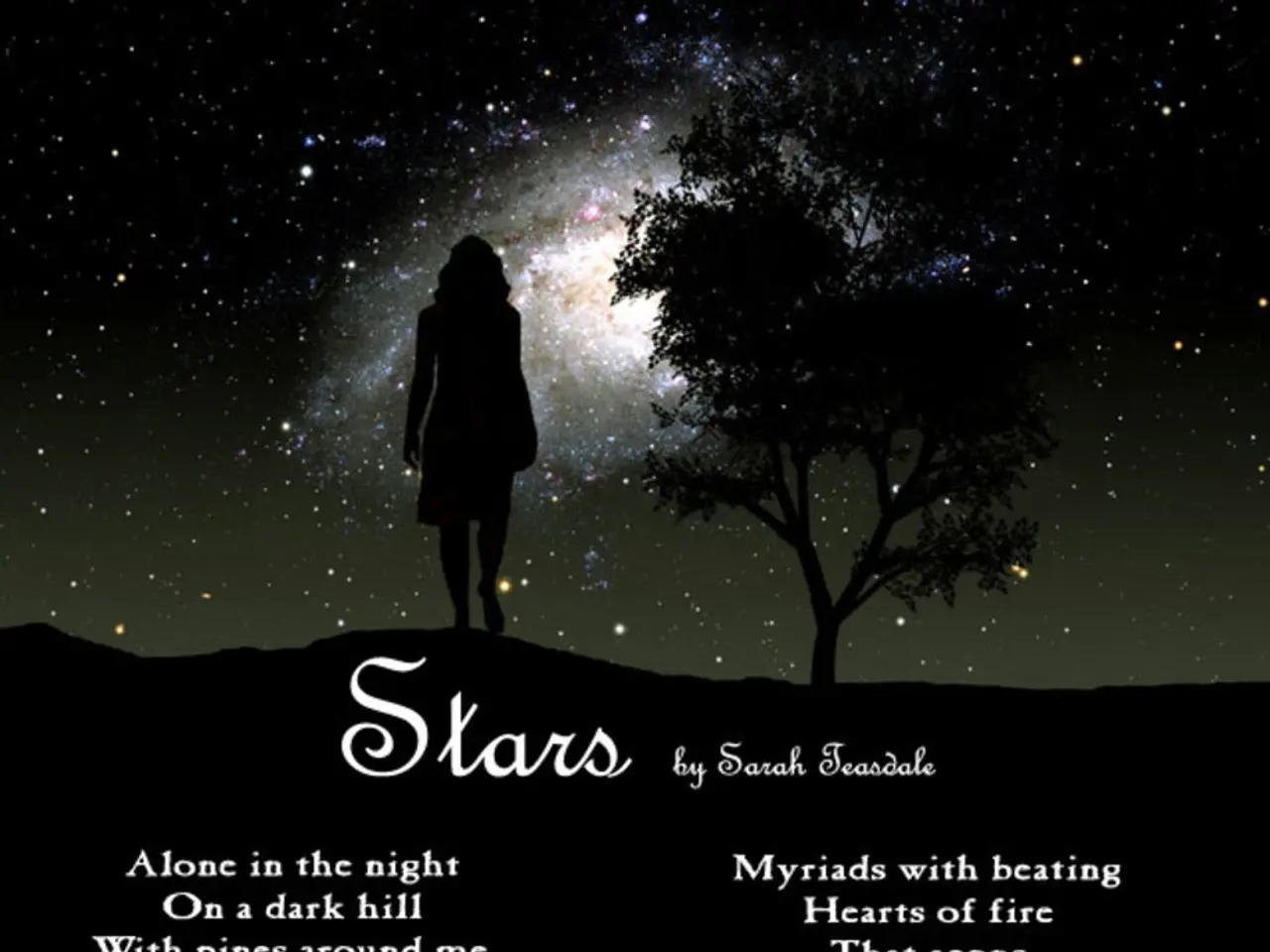Understanding the Mechanisms of Poetry: A Deep Dive
Poetry, a timeless art form, has undergone significant transformations in the 20th century and beyond. These changes reflect shifting cultural, social, and artistic priorities, as poets have continually pushed the boundaries of language and form to express the complexities of their times.
Modernism (Early to Mid-20th Century)
Modernist poetry marked a departure from traditional forms and narrative styles. Poets like T.S. Eliot and Ezra Pound experimented with new structures, fragmented texts, and symbolic imagery. Influenced by rapid societal changes and World War I, modernist poets sought to depict the complexities of modern life, focusing on alienation, disillusionment, and the unconscious.
Beat Poetry (1940s–1960s)
Emerging post-World War II, the Beat Generation poets like Allen Ginsberg, Jack Kerouac, and William Burroughs reacted against what they saw as oppressive societal norms, materialism, and conformity. Beat poetry is characterized by a raw, spontaneous style that often incorporates a long, flowing line influenced by Walt Whitman, frequent repetition (anaphora), candid exploration of sexuality, and embracing nonconformity and spiritual seeking. Ginsberg’s Howl exemplifies this style, with its long lines, rhythmic repetition, and political critique.
Postmodernism (Mid to Late 20th Century and Beyond)
Postmodern poetry challenges universal truths and embraces paradox, playfulness, and intertextuality. It often questions language, meaning, and the idea of authorship itself, mixing high and low culture and blending genres. Poets like Charles Bernstein exemplify radical poetics with experimental essays and linguistic invention that disrupt conventional form.
Spoken Word and Performance Poetry (Late 20th Century to Present)
This movement prioritizes the oral and performative aspects of poetry, often engaging audiences in direct, emotive, and political expression. It revives poetry as a communal event, frequently tied to activism and identity politics. For example, dub poetry by Linton Kwesi Johnson in the UK combines rhythmic musical elements and political protest, directly confronting racial injustice through performance. Contemporary spoken word embraces diverse voices, including post-colonial perspectives, migrant experiences, and social justice themes, emphasizing embodied acts of resistance and connection.
Together, these movements illustrate poetry’s trajectory from formal experimentation and introspective disillusionment to engaged public performance and political activism, with ongoing innovation in language, form, and delivery reflecting evolving cultural conditions.
Key Characteristics Summary:
| Movement | Period | Characteristics | Notable Figures | |--------------------|-------------------------|----------------------------------------------------------|-----------------------------------------------------| | Modernism | Early 20th century | Formal experimentation, fragmentation, symbolism | T.S. Eliot, Ezra Pound | | Beat Poetry | 1940s–1960s | Spontaneous style, long lines, anaphora, anti-conformity | Allen Ginsberg, Jack Kerouac, William Burroughs | | Postmodernism | Mid–late 20th century | Irony, intertextuality, linguistic playfulness | Charles Bernstein | | Spoken Word/Performance | Late 20th century–present | Oral delivery, political/social activism, community focus | Linton Kwesi Johnson (dub poetry), various contemporary poets |
This evolution underscores poetry's shift from page-bound literary form to an interactive, performative, and socially engaged art, embodying diverse voices and political statements in the contemporary moment.
In addition to these movements, it's worth noting that the shortest poem, consisting of just 27 words, is "A Red Wheelbarrow" by William Carlos Williams. Furthermore, Bob Dylan and many rappers are known for the poetic qualities of their lyrics. However, there is no universally recognized "most famous poet of all time."
References:
[1] Johnson, L. K. (2020). The Voice of the Voiceless. Verso. [2] Bernstein, C. (2013). Content's Dream. University of Chicago Press. [3] Ginsberg, A. (1995). Howl and Other Poems. HarperPerennial. [5] Kerouac, J. (2007). On the Road. Penguin Classics.
Science is increasingly incorporating the principles and practices of workplace-wellness, health-and-wellness, fitness-and-exercise to promote a holistic approach to employee wellbeing. This trend is closely linked to the growing emphasis on mental-health, an essential aspect of overall wellness that often goes overlooked.
Men's health has also witnessed significant attention, emphasizing the importance of regular check-ups, mens-health screenings, and open discussions surrounding topics like prostate health and testicular cancer. Skin-care, a critical component of overall health and self-care, is being redefined with modern therapies-and-treatments that cater to various skin types and concerns.
Nutrition plays a pivotal role in sexual-health and family-health. Balanced diets rich in essential vitamins and minerals enhance reproductive health, while proper nutrition during pregnancy supports the overall health of both mother and child.
Women's health continues to be a focal point, with more emphasis on reproductive rights, breast-cancer awareness, and comprehensive reproductive-health services. Parenting resources and guidelines abound, encompassing education-and-self-development, personal-growth, and mindfulness to promote nurturing and supportive parenting practices.
Medicare policies and provisions emphasize holistic health care, including coverage for mental-health services, preventative care, and chronic disease management. CBD, a popular non-psychoactive cannabinoid, is being explored for its potential benefits in pain management, anxiety relief, and sleep enhancement.
In the realm of lifestyle, cooking, fashion-and-beauty, food-and-drink, and recipes have gained prominence. These aspects reflect personal preferences, cultural identities, and values, as individuals seek to make well-informed choices that support their health and wellness goals.
Productivity, career-development, job-search, and goal-setting skills are integral to modern living. Skills-training programs focus on enhancing creativity, adaptability, and resilience – qualities that are highly valued in today's rapidly changing work environment.
Mindfulness, an essential practice for stress management and mental wellness, is becoming increasingly popular. Furthermore, the benefits of incorporating mindfulness practices in workplaces are being recognized, leading to the rise of mindfulness-based stress reduction programs.
All these elements – science, poetry, and the various facets of the contemporary lifestyle – converge, shaping a vibrant, evolving world where health, self-care, and personal growth emerge as central themes.




